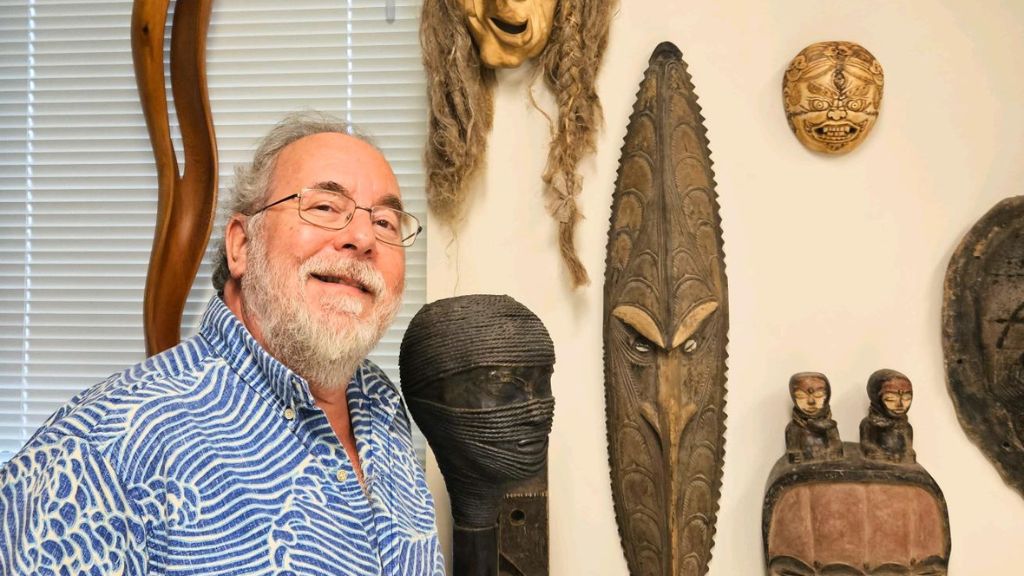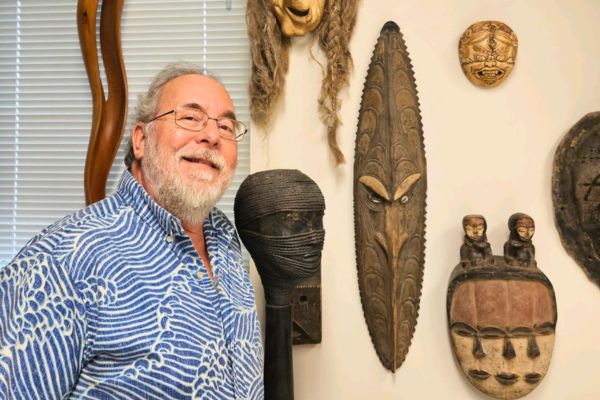
In the nearly 50 years since Ken Suslick was named a Hertz Fellow in 1974, he has amassed a remarkable list of academic and entrepreneurial achievements.
Suslick’s accomplishments include exponentially cited research to commercialized scientific advances with worldwide application, including the foundation of the chemical effects of ultrasound (“sonochemistry”) and the development of the first FDA-approved nanopharmaceutical (Abraxane™, a chemotherapeutic agent for breast and pancreatic cancer).
Suslick, a gregarious man who punctuates conversation with humorous quotes and laughter, said a simple question has guided his success.
“Is it interesting? I learned to ask that question about any research project. There was never an emphasis on whether it was basic science or not, whether it was pure or applied. The important question was and remains, is this interesting?” he said.
Suslick was introduced to this principle by organic chemist Robert Bergman while Suslick worked with him as an undergraduate at Caltech. The approach was underscored by legendary physicist Lowell Wood, who interviewed Suslick for the Hertz Fellowship and then hired him in his Livermore lab the summer before Suslick began his PhD at Stanford. Wood, a well-known and beloved figure in the Hertz community, holds the record for the number of U.S. Patents, and Suslick attributes his own interest in invention to Lowell’s tutelage.
What makes something interesting for Suslick is newness—a new way of looking at something, a fresh approach to problem-solving. “Something that’s boring isn’t going to change your perspective. What it comes down to, my functional definition of interesting is, does it change the way I think?”
Suslick has been a crucial partner in pioneering inventions with widespread impact. In addition to the aforementioned chemotherapeutic Abraxane™, Suslick helped develop the first echo contrast agent for medical sonography, the commercial use of colorimetry for rapid diagnosis of sepsis (blood infections), and, most recently, the use of colorimetric sensor arrays for the rapid detection of toxic gases. For his 70th birthday, he launched the company Iridescent Sensors to parlay this work into a lightweight, handheld gas sensor for first responders. It is just one of many inventions among his 71 patents issued or pending.
The 500-plus publications he has authored have been cited more than 67,000 times. The numerous national and international honors and awards he has received include the George Eastman Professorship, a prestigious visiting appointment at the University of Oxford, in 2018-19. Among the accomplishments he is most proud of is mentoring 75 PhD students over 45 years of teaching at the University of Illinois at Urbana-Champaign, where he is the Marvin T. Schmidt Professor of Chemistry Emeritus.
“I always viewed my job as a professor as being like a maître d’ at an exclusive restaurant. I would present my graduate students with a menu of research projects. I would make sure they had everything they needed, but it was their meal,” he said. “What I didn’t do was to come by every five minutes and say, ‘how’s the chow?’ But I kept an attentive eye. It was a supportive, not restrictive, environment. The job of a professor is to create independent research scientists, and you cannot do that if you control students too much. They have to make their own mistakes, make their own discoveries, and make their own breakthroughs.”
Among the years Suslick spent in the classroom as a professor, several were devoted to being a student himself, learning to be a sculptor. “Art was always part of my upbringing,” said Suslick, whose mother was a professional artist. “I was a non-matriculated sculpture major for a while at Illinois, working in bronze casting,” he said.
Many of the sculptures he created are masks, echoing an interest he has had since childhood. He bought his first tribal mask when he was 8 years old from “a horrible tourist dive in the Wisconsin Dells,” he said, laughing. Since then, he has collected more than 400 masks from all over the world. His criteria for adding to his collection is simple: “Is it interesting?”

Although he is no longer in the classroom as a student or a teacher, Suslick stays in touch with former students through an annual newsletter and occasional gatherings. “We had a group reunion a few years ago, and it was spectacular to see all the things they’ve done and the directions they’ve gone in,” he said. And he still gives his annual “Seminar on Seminars,” now in its 43rd year, to incoming grad students.
He continues to support young scientists by hiring them in his nascent company and by giving to the Hertz Foundation.
“My relationship with the Hertz Foundation is paying back—really, I should say, paying forward,” Suslick said. He made his first gift to the foundation 20 years ago and has continued to contribute over the years.
“Hertz was good to me. The people that Hertz supports are spectacular young scientists, and many of them go on to have spectacular careers. I have some sense of obligation to support that.”


